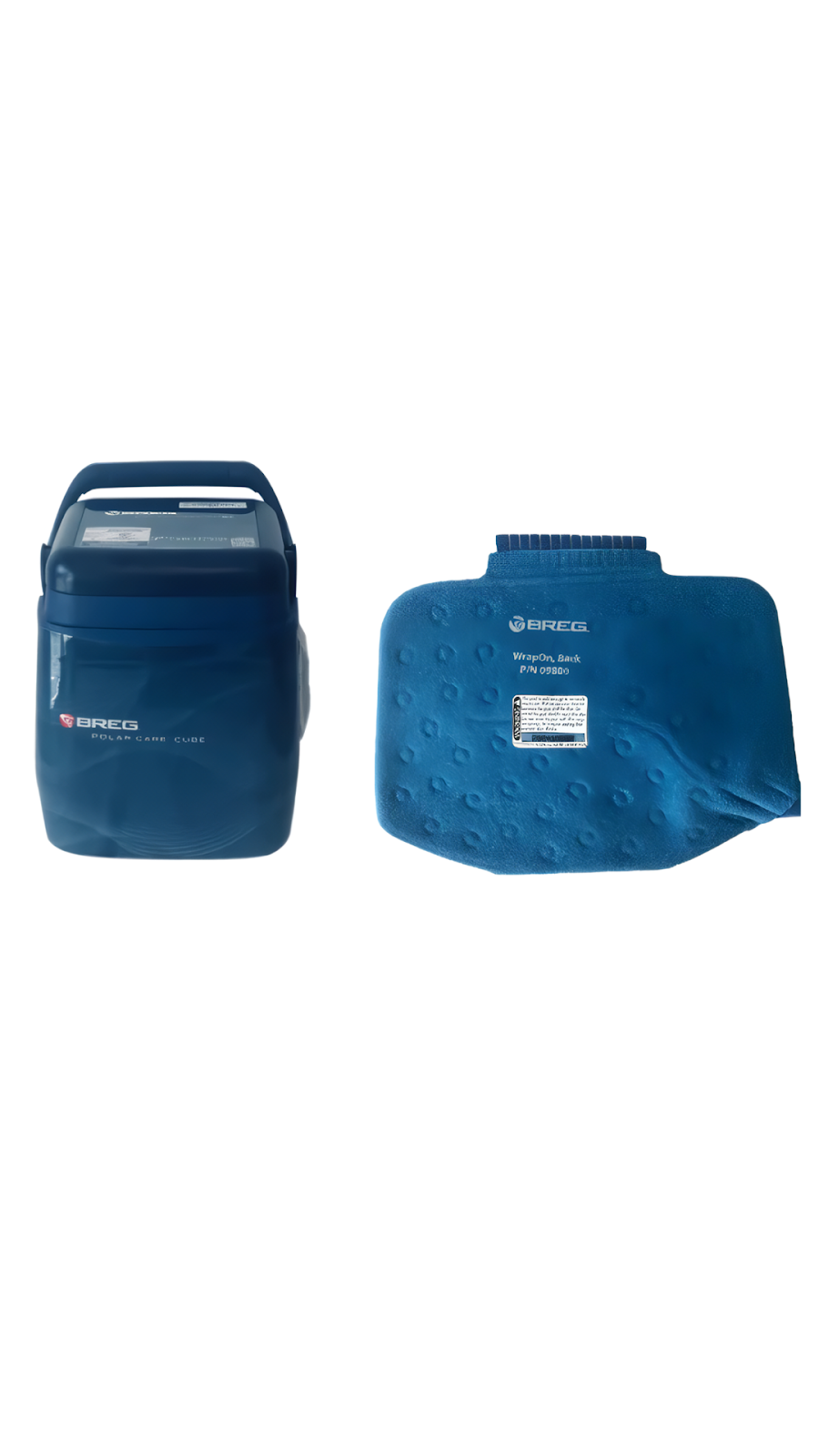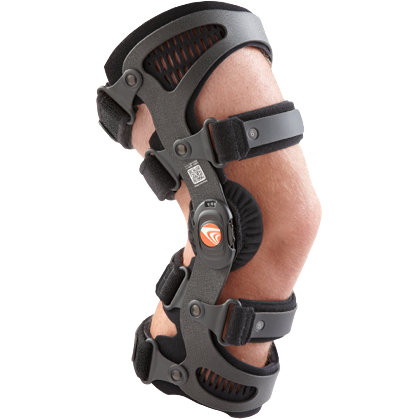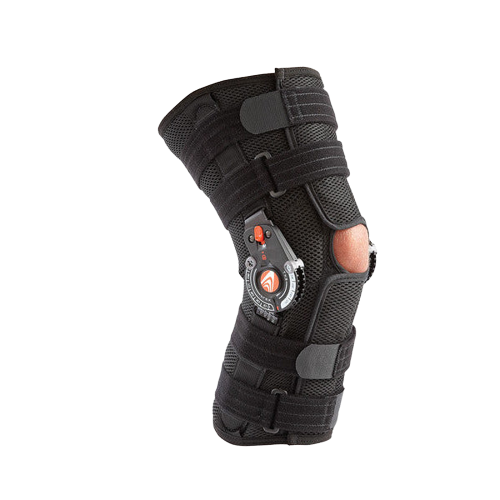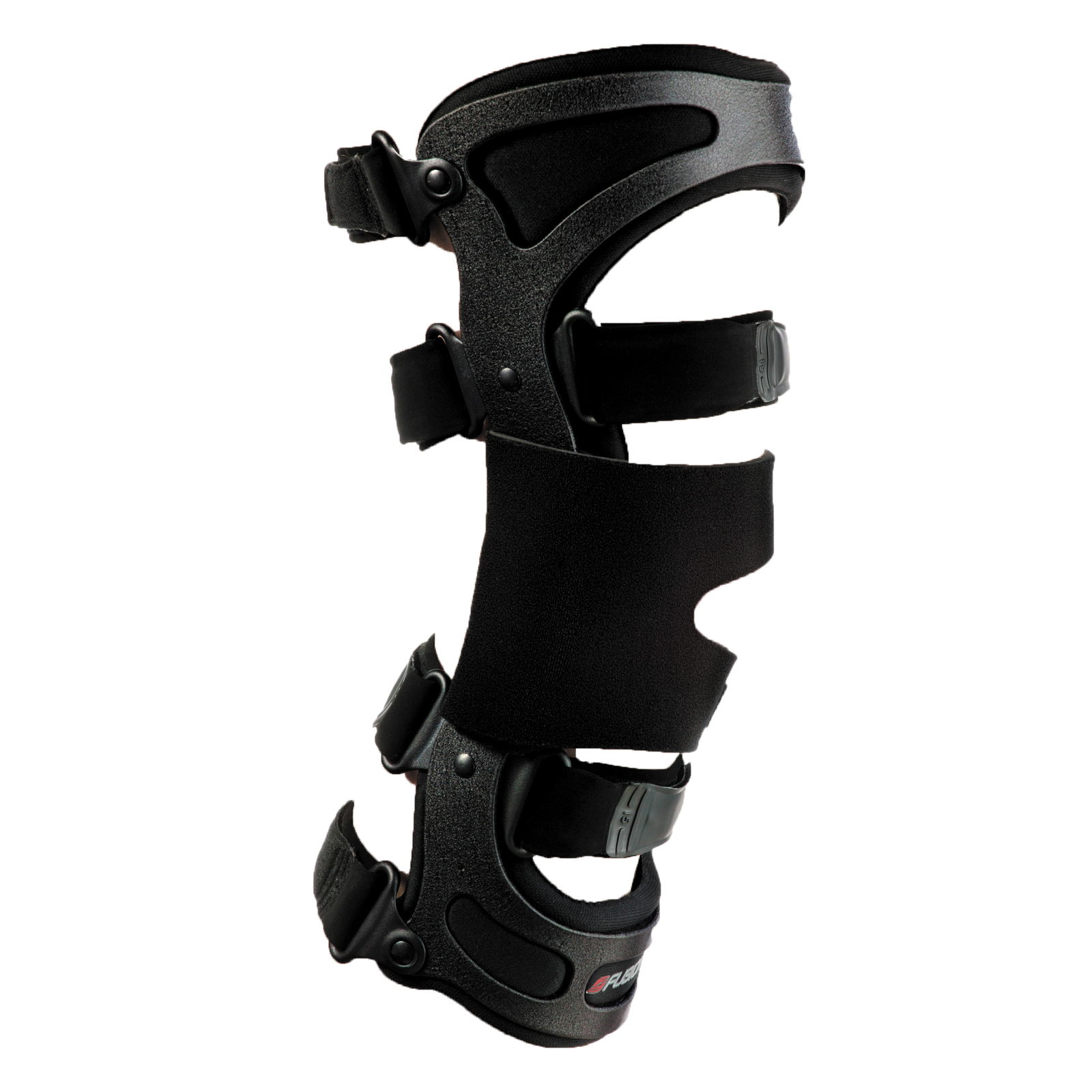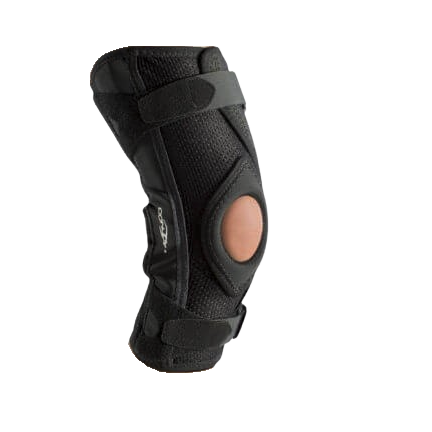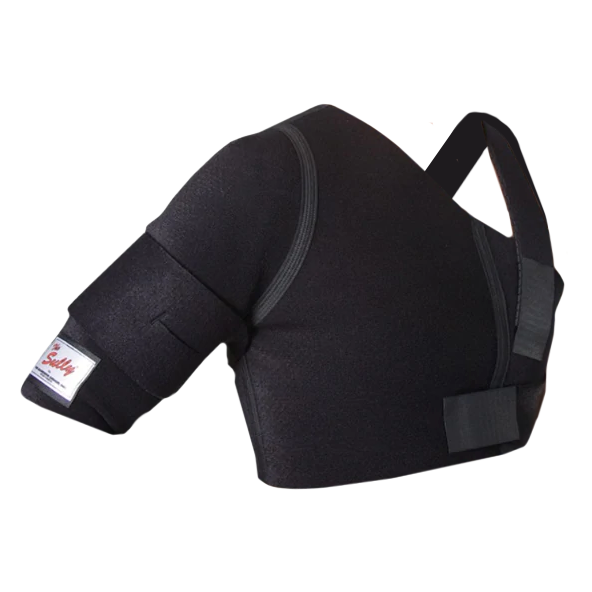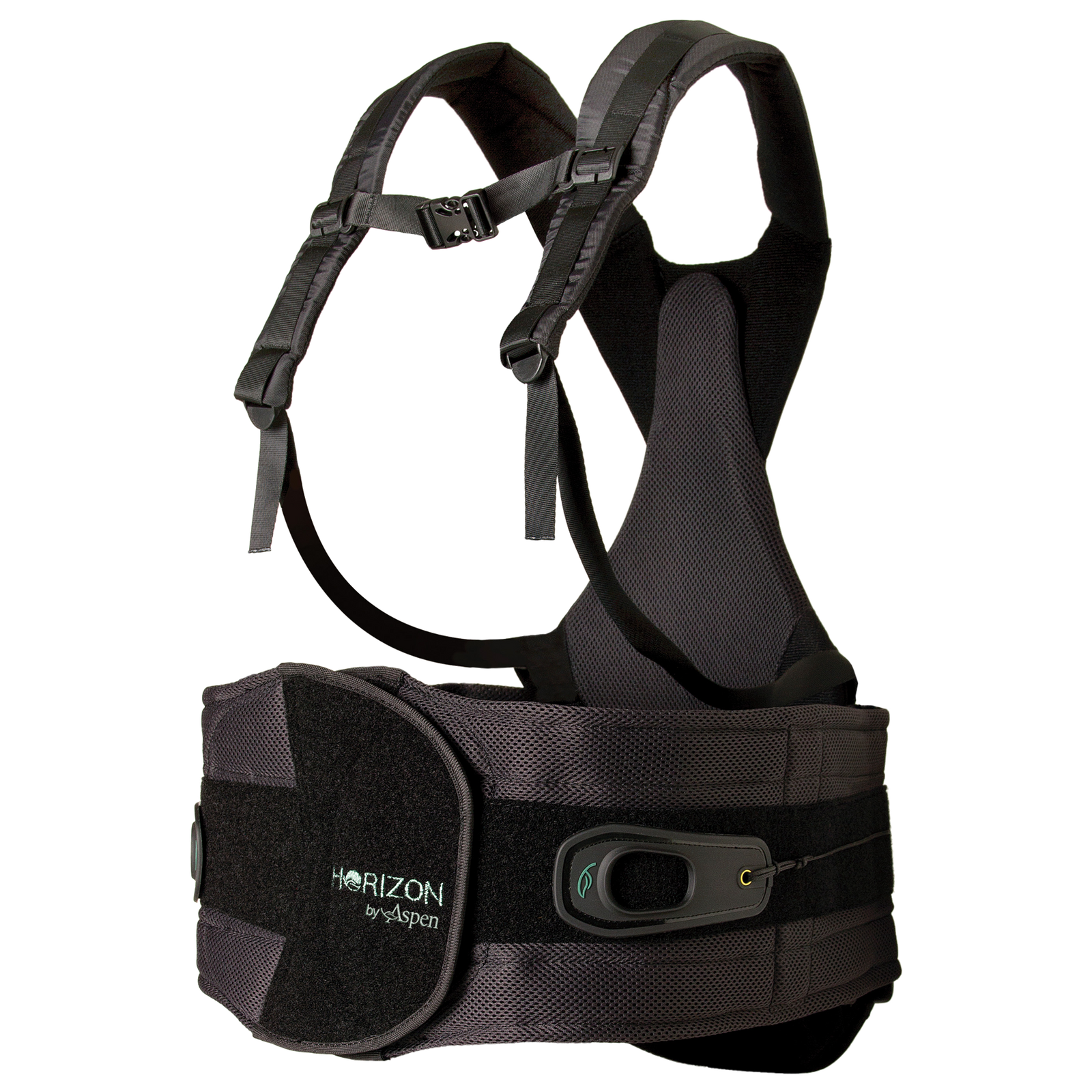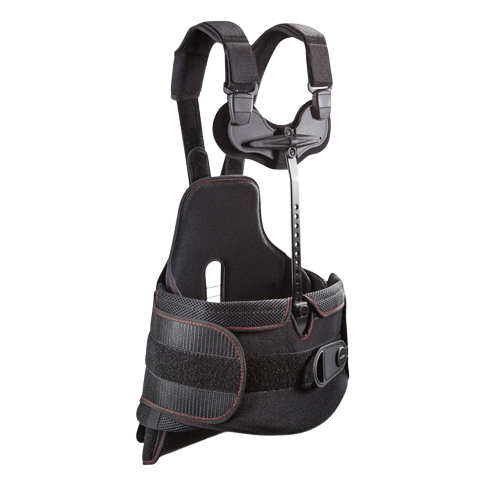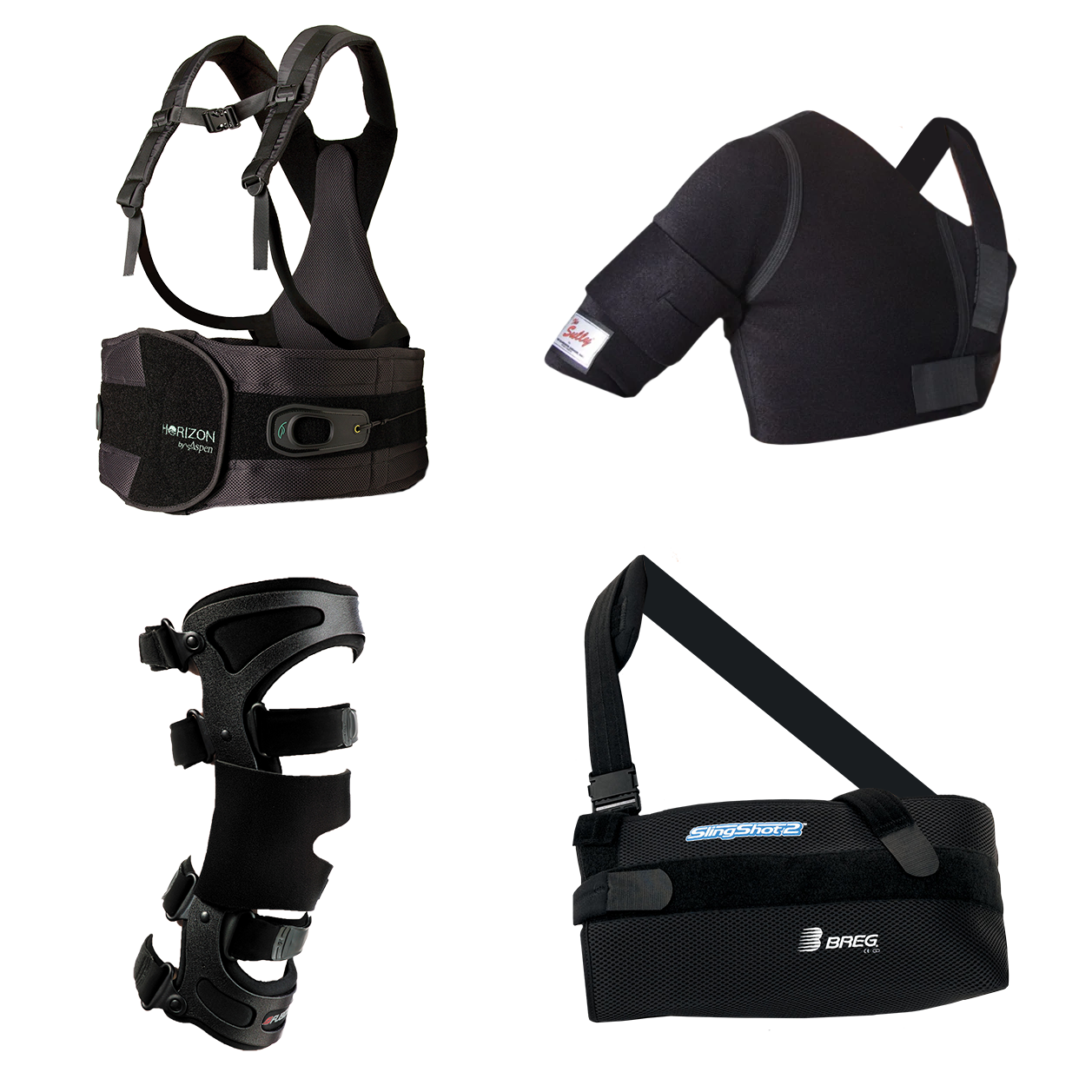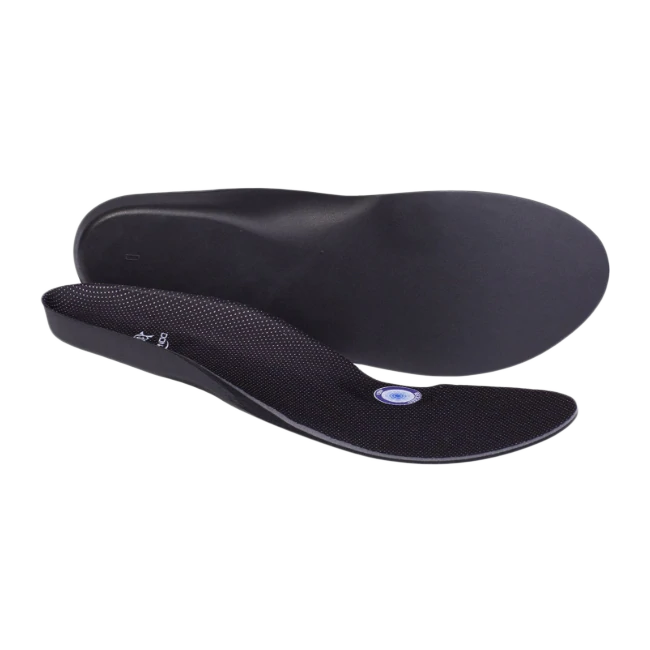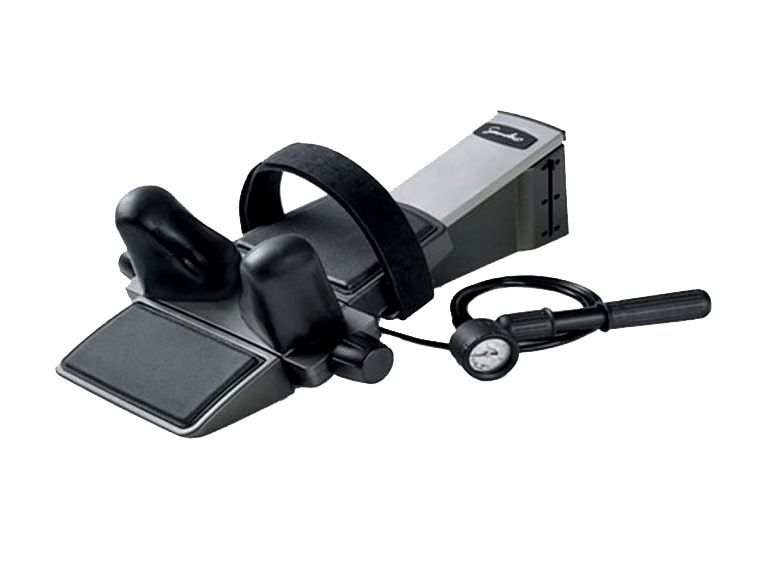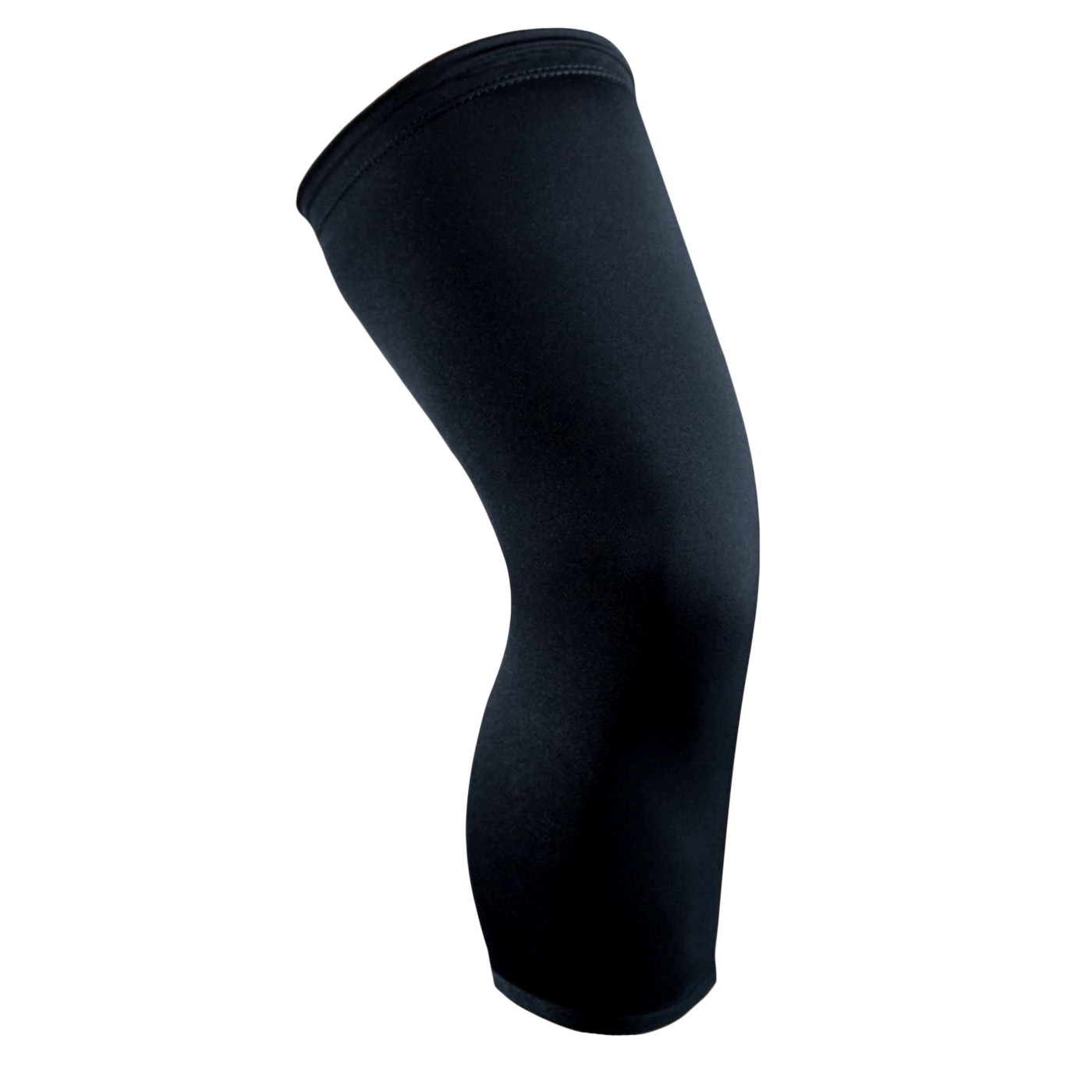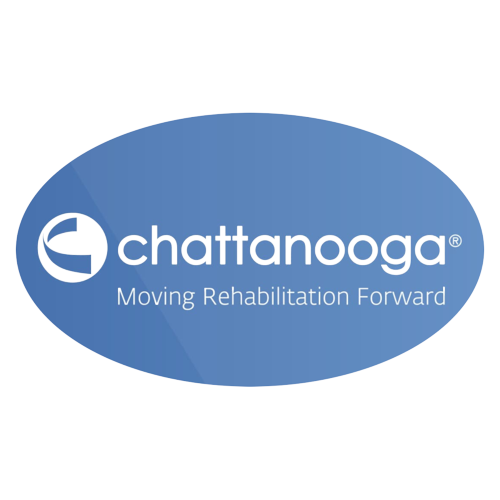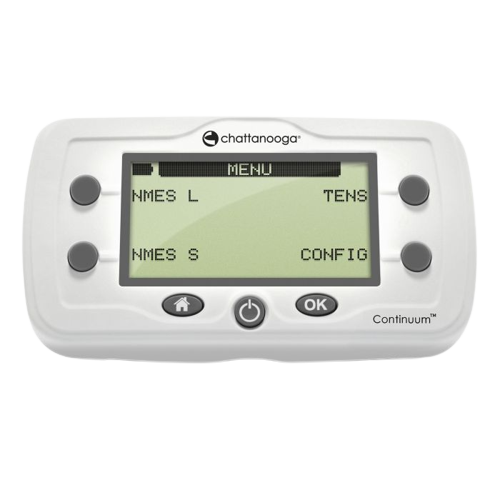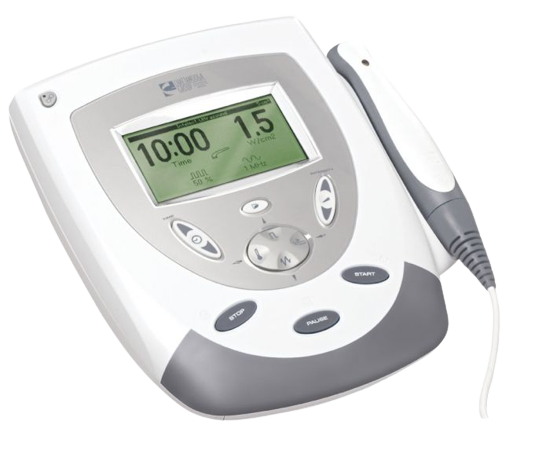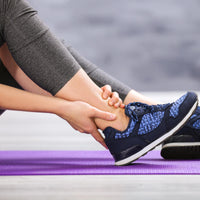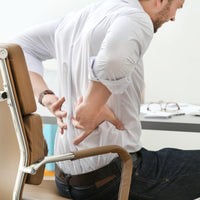
Key Takeaways:
- Effective Cold Therapy: This guide offers detailed instructions on effectively using an ice machine for knee recovery, providing a step-by-step process to maximize the benefits of cold therapy.
- Follow Safety Instructions: It is important to follow the recommended durations and safety measures during ice therapy sessions to avoid adverse effects like frostbite or nerve damage.
- Ins And Outs Of Ice Machines: This section highlights key features and best practices for selecting, using, maintaining, and cleaning ice machines, ensuring optimal performance and patient comfort during rehabilitation.
As a trusted provider of home healthcare solutions, OrthoBracing is dedicated to helping individuals find relief from discomfort. Our commitment to quality products and informative resources makes us a reliable source for those seeking effective pain management strategies.
Dealing with knee discomfort or recovering from surgery often requires effective cold therapy. An ice machine can provide consistent, targeted relief, helping reduce swelling and improve comfort during the healing process. Compared to traditional methods, ice machines are designed to deliver a controlled and continuous cooling experience, making them a practical solution for knee care.
In this guide, we’ll walk you through a step-by-step process for properly using an ice machine for your knee, ensuring a comfortable and effective recovery experience.
What Is An Ice Machine For Knee Therapy?
An ice machine for knee therapy, also known as a cold therapy machine, is designed to provide targeted, continuous cold therapy to the knee joint. This innovative solution has been widely recognized as an effective way to reduce swelling, manage pain, and accelerate healing after orthopedic surgery. Unlike traditional ice packs that can melt quickly and require frequent changes, an ice machine for knee therapy delivers a steady, controlled cold supply to the affected area, ensuring deep, consistent cooling without the risk of ice burns or frostbite.
These machines typically consist of a cooler that holds ice and water, a pump that circulates the cold water, and a specially designed pad that wraps around the knee, ensuring maximum coverage and comfort. By maintaining a constant, cool temperature, ice machines help to constrict blood vessels, minimizing swelling and inflammation and, ultimately, facilitating a quicker recovery.
When Should You Use An Ice Machine For Knee Treatment?
Here are a few scenarios where incorporating ice machine therapy can be highly beneficial:
- Post-Surgery Recovery: Cold therapy can help reduce swelling and inflammation immediately after knee surgery. According to your healthcare provider, it is advisable to start using the ice machine as soon as possible after the operation.
-
After Physical Therapy Sessions: Physical therapy is integral to recovery. It often involves exercises that can cause discomfort or slight swelling in the knee area. Using an ice machine after these sessions can help mitigate these symptoms and enhance recovery.
- Following Any Knee Injury: Ice machines can also be beneficial following any knee injury, not limited to post-surgical recovery. Whether it's a sprain, strain, or more severe injury, cold therapy can reduce pain and swelling, facilitating a quicker recovery.
- During Flare-Ups Of Chronic Conditions: Individuals with chronic knee issues, such as arthritis, may experience acute pain or swelling episodes. Incorporating ice therapy during these times can offer relief and manage symptoms effectively.
Remember, while the ice machine is a powerful tool in knee treatment, it should be used as part of a comprehensive recovery plan, including physical therapy, rest, and any other treatments recommended by your healthcare provider.
The Benefits Of Using An Ice Machine For Knee Pain Relief
An ice machine, known as a cold therapy unit, offers a modern solution for pain relief and inflammation reduction. Understanding the benefits of this innovative approach can significantly improve one's recovery journey.
Continuous Cold Therapy
Unlike traditional ice packs that warm up quickly, an ice machine delivers a consistent, therapeutic cold over an extended period. This continuous cold therapy helps to maintain a consistent temperature over the knee area, providing deeper penetration and lasting relief from pain and swelling. Such consistency in cold application amplifies the therapeutic benefits, aiding in a smoother and faster recovery process.
Uniform Cold Distribution
The design of high-quality ice machines ensures that cold is distributed evenly around the entire knee. This uniform cold distribution targets the knee from all angles, enveloping it in therapeutic cold and providing comprehensive pain relief. It's a significant upgrade from makeshift ice packs that may only cool certain parts of the knee, leaving other areas untreated.
Reduced Risk Of Tissue Damage
One critical advantage of using an ice machine for knee pain relief is the minimized risk of tissue damage. Traditional ice therapy can sometimes lead to frostbite or nerve damage if the ice is too cold or left on for too long. Ice machines are calibrated to remain at a safe, constant temperature, drastically reducing the risk of cold-induced damage.
Convenience And Comfort
Recovering from orthopedic surgery can be challenging, but an ice machine for the knee adds a layer of convenience and comfort. It eliminates the constant need to freeze and replace ice packs, providing hassle-free therapy sessions. Additionally, the machines are typically equipped with comfortable wraps that fit snugly around the knee, ensuring the user can remain mobile and relaxed during treatment.
Optimal Healing Environment
Cold therapy reduces blood flow to the treated area, significantly decreasing inflammation and swelling. By using an ice machine for knee pain relief, you're effectively creating an optimal healing environment that encourages faster recovery. This efficient management of symptoms allows for better mobility and a quicker return to daily activities.
How To Properly Set Up Your Ice Machine For Knee Therapy
Setting up your ice machine for knee therapy is a critical step in your recovery journey post-orthopedic surgery. Here's a step-by-step guide to ensure you correctly use your ice machine for optimal knee therapy.
Step 1: Unbox And Assemble
Start by carefully unboxing your ice machine. Each model may come with different components, such as a base unit, a hose, a therapy pad, and a power supply. Refer to the manufacturer's instructions for assembly guidelines to properly connect the therapy pad to the machine using the hose and ensure all components are securely attached.
Step 2: Fill With Ice And Water
Once your machine is assembled, open the lid of the reservoir. Fill the reservoir with ice to the indicated level, then add cold water to the fill line. For most ice machines, a mix of ice and water ensures an optimal cold therapy experience. The precise ratio of ice to water can vary depending on the model, so it's essential to consult your user manual for the recommended proportions.
Step 3: Positioning The Therapy Pad
Positioning the therapy pad correctly is crucial for effective knee therapy. Most pads are designed to comfortably wrap around the knee joint. Ensure the pad covers the entire area that requires treatment. Secure the pad with the straps, adjusting for comfort and effective coverage. The pad should fit snugly but not so tight that it restricts circulation.
Step 4: Power On And Adjust Settings
After ensuring the therapy pad is securely in place, it's time to power on your machine. Use the control panel to adjust the settings according to your comfort level and therapeutic needs. Healthcare professionals typically recommend ice therapy in intervals—often 20 minutes, followed by a 20-minute break—to avoid skin damage or other complications.
Step 5: Monitor Your Session
As you start your therapy session, it is essential to stay attentive to how your knee feels throughout the process. If you experience any discomfort or numbness, pause your session and inspect your knee and the fit of the therapy pad. Adjustments to the pad's position or the machine's settings may be necessary to ensure a comfortable and effective treatment.
Tips For Ensuring Maximum Comfort And Safety During Ice Machine Use
Comfort and safety should be your top priorities when using an ice machine for knee recovery. Here are essential tips to ensure you get the maximum benefits from your cold therapy while minimizing any risks:
- Start With A Barrier: Always place a thin cloth or barrier between your skin and the ice therapy pad. This step is crucial to prevent skin damage from exposure to extreme cold. A thin towel or a piece of cloth works perfectly for this purpose.
- Check Temperature Sensitivity: Before settling in for a session, briefly test your skin's reaction to the cold. This is especially important for individuals with sensitive skin or conditions like diabetes, which might affect sensation. If the cold feels unbearable at first contact, adjust the layering of your barrier.
- Follow Recommended Duration: For optimal results without harming your tissue, adhere to the recommended duration for cold therapy sessions. Typically, 20 to 30 minutes per session is advised, but it's essential to follow any specific guidance your healthcare provider provides. Allow ample time between sessions for your skin to return to its normal temperature.
- Monitor Skin Condition: After each cold therapy session, carefully inspect your skin for any signs of irritation, such as redness or a rash. Also, be vigilant for frostbite symptoms, including numbness or hard, pale skin. If you notice these signs, stop using the machine and consult your medical provider.
- Keep Moving: While immobilization is sometimes necessary post-surgery, if your healthcare provider approves, gently move your toes and foot on the affected leg. This practice can help improve circulation and reduce the risk of complications from prolonged cold exposure.
- Stay Hydrated: Good hydration is key to recovery. Drinking plenty of water aids in the healing process and supports overall body functions, potentially reducing swelling more effectively.
- Adjust Settings For Comfort: As you become accustomed to the ice machine, feel free to adjust the settings for maximum comfort and efficacy. This might mean tweaking the intensity of the cold or the duration of each session. If your model doesn't have a timer, use an external timer to keep track of your sessions accurately.
How To Maintain And Clean Your Ice Machine After Each Use
Proper maintenance and cleaning of your ice machine are crucial for ensuring its longevity and effectiveness, especially when it plays such an essential role in your recovery process after orthopedic surgery. To help you keep your machine in top condition, follow these simple steps:
- Disconnect The Machine: Before any cleaning process, ensure the ice machine is turned off and unplugged. This safeguards you against any electrical hazards while cleaning.
- Empty The Machine: Drain all the water from the machine. Remove any ice or residue that might be left in the reservoir or the tubing. This step prevents the build-up of mold and mildew that could contaminate the system.
- Clean The Interior And Exterior: Use a soft cloth dampened with mild detergent and water to wipe down the inside of the reservoir and the exterior surfaces of the ice machine. Avoid using abrasive cleaners or pads that might damage the surface. For areas that are hard to reach, a soft-bristle brush can gently loosen any dirt or buildup.
- Rinse Thoroughly: After cleaning, it's important to rinse the machine with clean water. Make sure all soap residue is completely removed, as any left behind could harm your skin or exacerbate your condition when the machine is next used.
- Disinfect: To ensure the highest hygiene standards, consider using a solution of one part vinegar to ten parts water, or a mild bleach solution following manufacturer’s guidelines, to disinfect the reservoir, tubing, and pad. This step is particularly important in killing any bacteria or viruses that might be present.
- Dry Completely: Before reassembling or storing the ice machine, allow all parts to air dry completely. Moist environments can promote the growth of mold and bacteria, so ensuring everything is dry will keep your machine safe for future use.
- Reassemble According To Instructions: Once every component is dry, reassemble the machine according to the manufacturer's instructions. Ensure every part is correctly fitted to avoid leaks or damage when the machine is next used.
- Periodic Deep Cleaning: Besides these after-use cleaning steps, consider conducting a deep cleaning session every few months or as directed by the manufacturer. This can help extend the life of your machine and ensure it provides the best support in your recovery journey.
Common Mistakes To Avoid When Using An Ice Machine For Knee Therapy
Our commitment to providing high-quality brands like AirCast, Breg, Chattanooga, DonJoy, and Exos for orthopedic surgery recovery and pain relief means we understand the nuances of effective therapy. Here are some common pitfalls to avoid.
Not Following Specific Duration Recommendations For Ice Therapy
A common misconception is that "more is better" when it comes to ice therapy. However, using an ice machine for too long can lead to adverse effects such as frostbite or nerve damage. It's advisable to use the machine for the recommended length of time—usually 20-30 minutes per session—as recommended by healthcare professionals or the manufacturer’s guidelines.
Incorrectly Fitting The Wrap Or Pad
For ice therapy to be effective, the wrap or pad must be in direct contact with the skin around your knee, ensuring uniform cold distribution. Incorrectly fitting the wrap can lead to uneven cooling, reducing effectiveness and even causing discomfort. Make sure to carefully follow the fitting instructions provided.
Neglecting To Check Skin Periodically
While undergoing ice therapy, it’s crucial to periodically check your skin for any signs of irritation or adverse reactions, such as redness or numbness. These signs might indicate that the cold is too intense or that the skin is reacting negatively to prolonged exposure.
Using The Ice Machine On Bare Skin
Directly applying cold from an ice machine to bare skin can increase the risk of cold injuries. Always use the machine with a barrier, such as a fabric wrap provided with the machine, between your skin and the cold source. This layer helps to moderate the cold's intensity while ensuring effective therapy.
Ignoring Instructions For Care And Filling Of The Machine
To ensure your ice machine works correctly and safely, it’s vital to follow the manufacturer’s instructions for care, cleaning, and refilling. Using incorrect types of water or neglecting regular maintenance can hinder performance and potentially damage the machine.
Choosing The Right Ice Machine For Your Knee: Key Features To Consider
When selecting an ice machine for knee recovery, choosing a product that meets your specific needs is imperative while ensuring the highest level of comfort and efficacy. Our selection includes top brands like AirCast, Breg, Chattanooga, DonJoy, and Exos, known for their exceptional quality and performance in orthopedic surgery recovery and pain relief. Here are key features to consider:
Adjustable Temperature Settings
Opt for an ice machine that allows you to easily adjust the temperature. This feature will enable you to find the ideal coldness level for your knee’s condition and tolerance, ensuring a comfortable and effective recovery process.
Machine Size And Portability
Depending on your daily activities and storage capabilities, the size and portability of the ice machine are significant. Some models are designed for stationary, at-home use, while others are lighter and more portable, ideal for individuals needing to move around or who wish to continue their recovery routines outside the home.
Ease Of Use
Recovery periods can be challenging, so it's crucial to choose an ice machine that is straightforward to set up and operate. Look for user-friendly designs with clear instructions, easy-to-fill reservoirs, and comfortable attachment mechanisms to ensure your recovery process is as smooth as possible.
Wrap Design And Fit
The design and fit of the wrap that comes with the ice machine significantly impact the effectiveness of the therapy. Ensure the wrap fits snugly around your knee to provide consistent, even cooling. Adjustable straps or a universal fit design can offer versatile use, catering to knees of all sizes.
By prioritizing these features, you can choose an ice machine that will significantly aid in your knee's recovery, aligning with our commitment to carry only the highest quality brands for orthopedic surgery recovery and pain relief.
Final Thoughts
Recovering from orthopedic surgery, particularly on the knee, requires dedication to a regimen that ensures both pain relief and proper healing. Utilizing an ice machine for the knee is a cornerstone in this process, allowing for consistent, targeted cold therapy that significantly aids in reducing swelling, pain, and improving recovery times. Through the outlined steps, you’ve learned how to use an ice machine for your knee effectively and can now integrate this essential tool into your recovery plan confidently.
As you continue on your journey to recovery, know that we are here to support you every step of the way. Our selection of the highest-quality brands for orthopedic surgery recovery and pain relief—including AirCast, Breg, Chattanooga, DonJoy, and Exos—ensures that you have access to the best products designed to facilitate a smoother, more efficient recovery process. Your health and comfort are our utmost priority, aligned with our commitment to carrying the highest-quality brands that aid in your recovery.
Read also:
- Best Ice Machine For Knee
- How Long to Use Cold Therapy After Surgery
- The 7 Best Cold Therapy Machines for Faster Recovery Times
Frequently Asked Questions About How To Use Ice Machine For Knee
Can anyone use an ice machine for the knee?
Most individuals recovering from orthopedic surgery can benefit from using an ice machine to relieve knee pain and reduce swelling. However, it's essential to consult with a healthcare provider before starting any new treatment regimen, especially for individuals with certain medical conditions or cold sensitivities.
What types of knee injuries can be treated with an ice machine?
Ice machines for the knee are highly effective for a variety of conditions, including post-surgical recovery, sprains, sports injuries, and chronic conditions like arthritis. They help to minimize swelling, reduce pain, and accelerate the healing process by providing consistent, therapeutic cold to the affected area.
Can I rent an ice machine for my knee, or should I buy one?
The choice between renting and buying an ice machine for knee recovery depends on the individual's needs, frequency of use, and budget. Renting can be cost-effective for short-term needs, such as post-surgical recovery. In contrast, purchasing may benefit those with chronic conditions requiring long-term management.
Are there any risks associated with using ice machines?
When used correctly, ice machines are safe and effective. However, prolonged exposure to cold can lead to skin damage, frostbite, or nerve damage. To mitigate these risks, always use a barrier between the skin and the ice machine, follow the recommended usage times, and consult your healthcare provider for personalized guidance.
Is it better to use an ice machine than traditional ice packs?
Ice machines offer several advantages over traditional ice packs, including maintaining a consistent temperature, deeper penetration of cold therapy, and more targeted application. This can result in more effective pain relief and inflammation reduction for knee injuries.
How do I know if the ice therapy is working for my knee?
Effective ice therapy typically reduces swelling, decreases pain levels, and increases the range of motion in the affected knee. Track your symptoms before and after using the ice machine to gauge its effectiveness. Consult with a healthcare professional if your condition worsens or you do not notice improvement.

